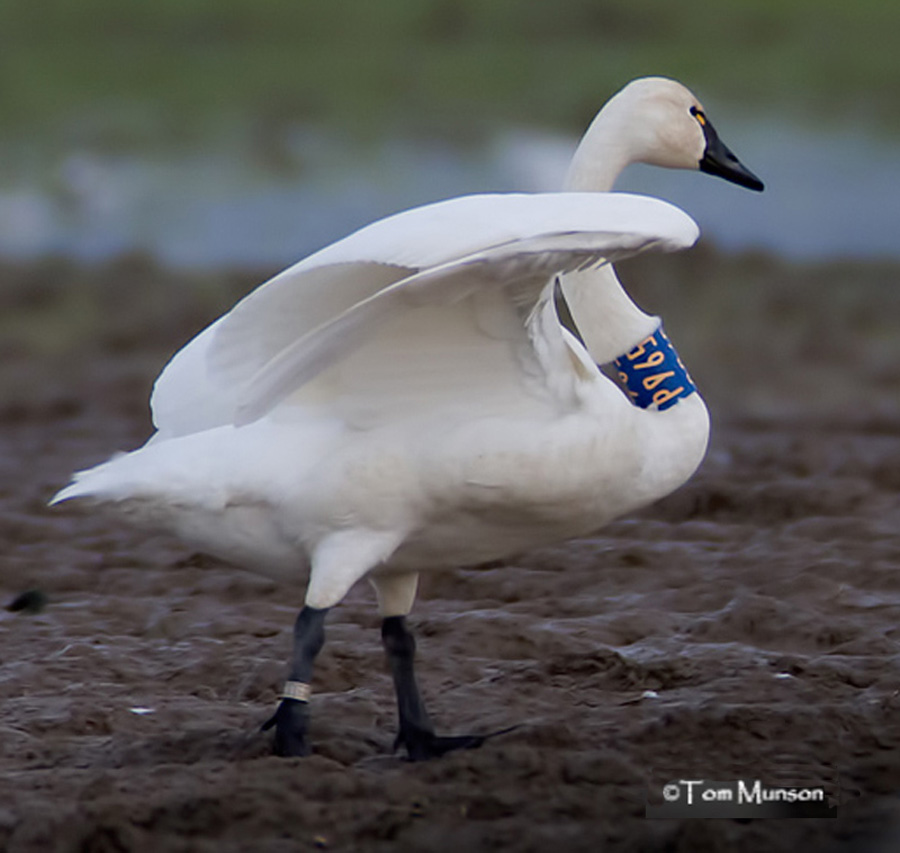Citizens like you are vital to swan conservation. You can help us learn about migration routes, rest stops, and wintering areas throughout our state for both Trumpeter and Tundra Swans. We share new sightings with swan managers at the state and flyway levels. It is exciting to learn about new areas where our native swans are being seen in Washington and the Pacific Northwest.
Follow these steps for reporting your swan sightings:
DID YOU SEE A MARKED SWAN: Neck Band, Leg Band, Or Wing Tag

1. SHARE YOUR SIGHTING WITH THE BIRD BANDING LAB
Please report any neck bands (collars), wing-tags, or leg banded Trumpeter or Tundra Swans to the Bird Banding Lab. Every bander must register their tagged birds of all species with the Bird Banding Lab. When you submit a report to the Bird Banding Lab, you will receive a response from them with information about the particular swan you saw, including the bander and information about the bird including date and location of banding, age and sex of swan if known. You may also information. An important reason for report is that the bander will also receive a report of your sighting. Thank you for reporting your sighting!
2. SHARE YOUR SWAN SIGHTINGS WITH US:
Join our network of volunteer observers to document the changes in habitat use and distribution of both Trumpeter and Tundra Swans in the Pacific Northwest. You will be part of an ongoing network of volunteer observers, working together to document swan numbers, dates, locations, and habitats they are using throughout Washington State.
Your swan sightings are important.
Use the downloadable form you can fill out and send back to us at swaninfo@nwswans.org
Or use the PDF version you can download, fill out, and mail back at:
Northwest Swan Conservation Association
914 164th St. SE, PMB 272
Mill Creek, WA 98012-6639
Providing as much detail as you know about your sighting is important. If you have photos of the swans you saw you can attach them to the email.
Not sure where you saw them? You can use the GPS on your phone, use Google Maps or Get a Latitude-Longitude location.
Which species: Trumpeter or Tundra or I am not sure. If you have a mixed flock, which is common in western Washington, you can report the total number of swans then how many you believe are Trumpeter and how many are Tundra Swans. Refer back to our Swan ID.
Your observations will help provide essential information needed to increase the long-term security of Trumpeter and Tundra Swans in Washington State and the Pacific Northwest.
